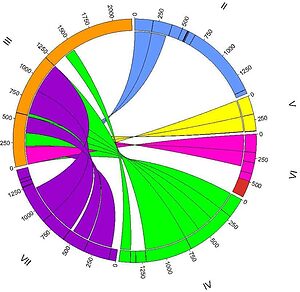For more than 50 years since its discovery, the single-celled organism Tetrahymena thermophila has stirred curiosity around its seven sexes. UC Santa Barbara biologists have now found how the creature picks its gender from the slew, and apparently it’s not a matter of choice since the Tetrahymena gender distribution is as random as a game of roulette.
The team of researchers found that post reproduction, the sex of the progeny is determined through a series of cut and paste genetic recombination events that keeps one gene pair but deletes the others.
“We found a pair of genes that have a specific sequence, which is different for each mating type,” professor emeritus Eduardo Orias of UC Santa Barbara said in a press release. “They are very similar genes — clearly related to one another, going back probably to a common ancestor — but they have become different. And each is different in a specific way that determines the mating type of the cell.”

Assembling a mating type gene in Tetrahymena. Ribbons show how each incomplete MTB gene (color coded) is joined to the end of the only complete gene (III, orange).
Credit: Michael J. Lawson
The Tetrahymena has two nuclei: one germiline where the genetic information for the progeny is stored and one somatic nucleus, known as the “working copy”.
Researchers describe the selection of the sex of the progeny as a game of roulette.
“The mating type of the ‘parents’ has no influence whatsoever on the sex of the progeny. It’s completely random, as if they had a roulette wheel with six numbers and wherever the marble ends up is what they get. By chance, they may have the same mating type as the parents — but it’s only by chance. It’s a fascinating system,” Orias said in a press release.
The Tetrahymena has roughly the same number of genes as the human genome, and as you can imagine the present research addresses findings that might benefit human medicine. By better understanding how DNA rearrangements work, scientists can devise novel treatments and technique ranging from tissue transplantation to cancer. The human body has a natural first-line of defense that identifies and expels away foreign bodies, like diseases and infections. This also is the leading cause of transplant failure however.
“By understanding this process better in Tetrahymena, what we learn ultimately may be of use in medicine. Tetrahymena has about as many genes as the human genome. For thousands of those genes you can recognize the sequence similarity to corresponding genes in the human genome with same biological function. That’s what makes it a valuable organism to investigate important biological questions,” Orias said.
The findings were detailed in a paper published in the journal PLOS Biology.









